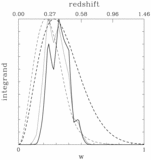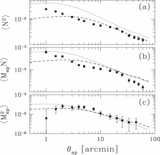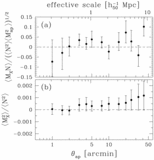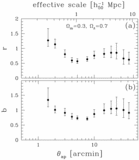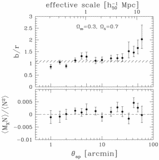Image Details
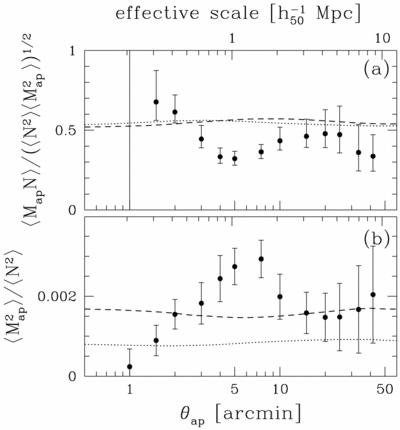
Caption: Fig. 3.
(a) Observed ratio ﹩\langle M_{\mathrm{ap}\,}\mathstrut{\cal N} \rangle / ( \langle \mathstrut{\cal N} ^{2}\rangle \langle M^{2}_{\mathrm{ap}\,}\rangle ) ^{1/ 2}﹩ as a function of aperture size. (b) Ratio of the mass autocorrelation ﹩\langle M^{2}_{\mathrm{ap}\,}\rangle ﹩ and the galaxy autocorrelation ﹩\langle \mathstrut{\cal N} ^{2}\rangle ﹩ as a function of aperture size. The measurements at different scale are slightly correlated, and the error bars correspond to the 68% confidence intervals. Upper axis: Effective physical scale probed by the compensated filter ﹩U( \phi ) ﹩ at the median redshift of the lenses ﹩( z=0.35) ﹩. Dotted lines: Predictions of an OCDM model, whereas the dashed lines correspond to the ΛCDM model for ﹩b=1﹩, and ﹩r=1﹩. In both cases, if b, and r are constant with scale, we expect to observe ratios that are virtually constant. The observed ratios show significant variation with scale, thus implying that both b and r vary.
Copyright and Terms & Conditions
© 2002. The American Astronomical Society. All rights reserved. Printed in U.S.A.


